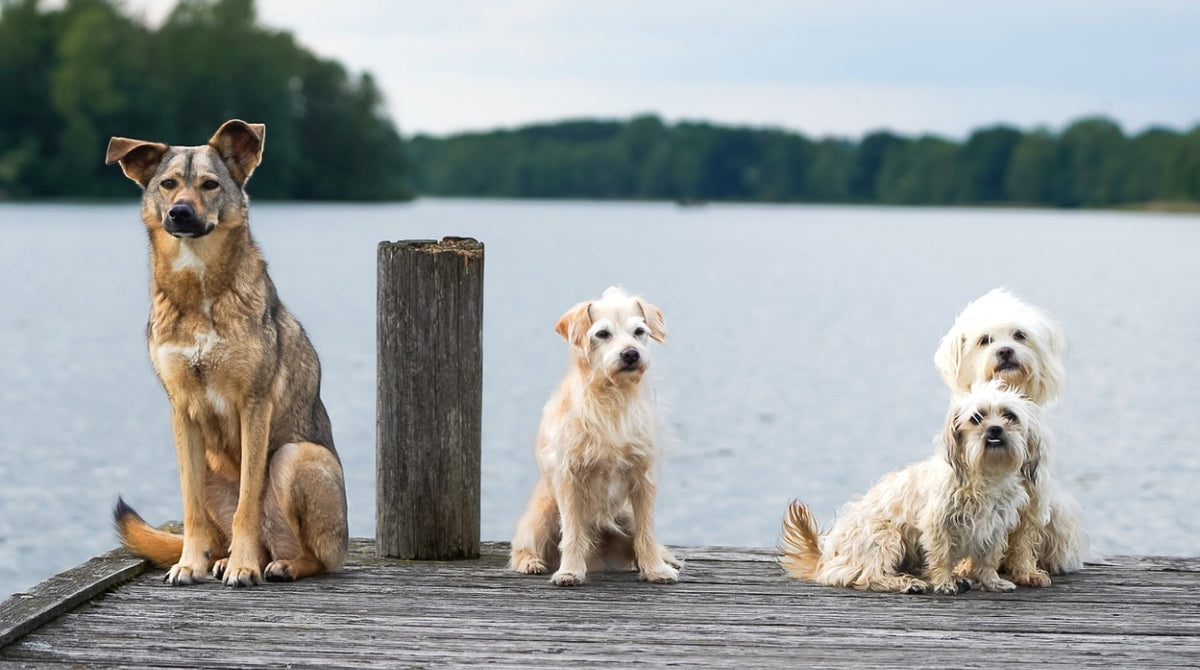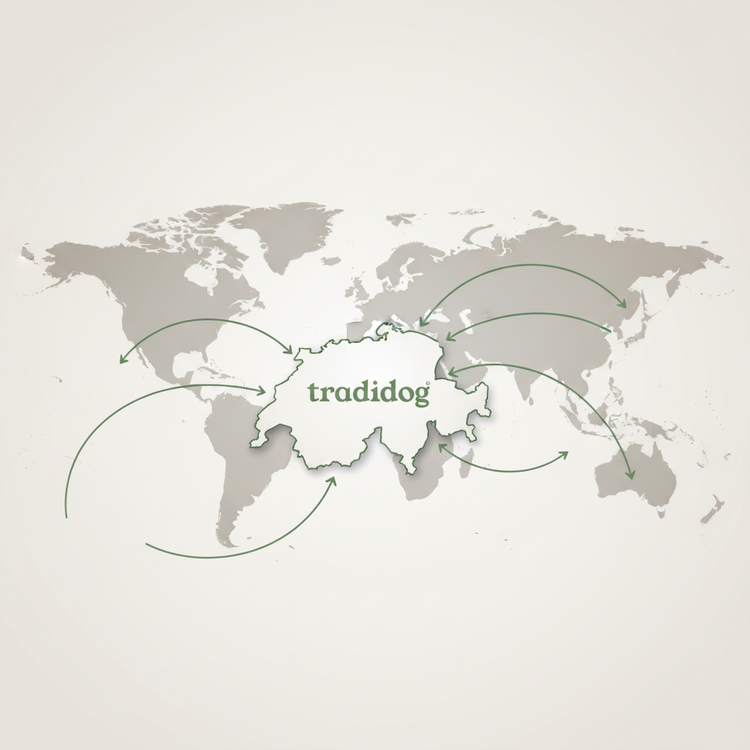
Find dogs that don't shed
The decision to add a dog to your family involves many considerations. One of the most common questions is, "Which dog is right for me if I don't want dog hair all over my house?" Perhaps you suffer from a dog allergy, or you simply want a low-maintenance home. The good news: There are dogs that shed little or no hair. In this article, I'll introduce you to some of these dog breeds, explain why they shed less, and give you tips on what to look for when choosing one of these four-legged friends.
Why do some dogs shed less?
We've already covered the topic of hair loss in dogs in more detail in another blog post . But here's a quick recap. Dogs that shed less often have special coat types or specific coat growth cycles. Here are the main reasons:
- Single or curly coat : Breeds such as Poodles or Bichon Frisés have curly coats that hold loose hairs instead of shedding them.
- No undercoat : Many dogs with low shedding do not have a double coat that is shed during the warmer months.
- Continuous hair growth : In dogs like the Maltese, the fur grows continuously and does not fall out in large quantities.
Dog breeds that shed little to no hair
In the following list, we present three smaller and three larger dog breeds that shed little to no hair. Please note: Don't expect these dog breeds to never leave a single hair in your home.
Smaller dog breeds that don’t shed
Bichon Frise
- Coat type : Curly and soft.
- Special feature : Hardly sheds hair and is hypoallergenic.
- Size : 23-30cm, 3-5kg.

Maltese
- Coat type : Long, silky, without undercoat.
- Special feature : Hair loss minimal, but daily brushing necessary.
- Size : 20-25 cm, 3-4 kg.

Yorkshire Terrier
- Coat type : Long, smooth, without undercoat.
- Special feature : Hardly loses hair, resembles human hair.
- Size : 20-23 cm, 2-3 kg.

Larger dog breeds that don't shed
Poodle (Standard)
- Coat type : Dense, curly, without undercoat.
- Special feature : Hypoallergenic and hardly sheds.
- Size : 45-60cm, 18-32kg.

Labradoodle (large version)
- Coat type : Curly to wavy, depending on the poodle content.
- Special feature : Many Labradoodles hardly shed, ideal for allergy sufferers.
- Size : 53-63 cm, 23-30 kg.

Little extra: Largest dog breed that sheds little to no hair
Giant Schnauzers are among the largest, lightest-shedding dog breeds. Standing at 60 to 70 cm at the shoulder and weighing 35 to 47 kg, they make impressive companions. Their dense, wiry coat hardly sheds, making them particularly attractive to people who value a clean home. However, their coat requires regular grooming, including brushing and trimming, to prevent matting and maintain healthy skin.

Note: Despite the minimal amount of hair, all of these breeds require regular grooming to keep their coat healthy and free from matting.
Are these dogs hypoallergenic?
Just to refresh your knowledge: Hypoallergenic means that a product or animal (e.g., a dog) is less likely to trigger allergies because it produces only small amounts of potentially allergenic substances such as dander, saliva, or hair. However, it does not completely protect against allergic reactions, as no breed or product is completely allergen-free.
Many of the breeds mentioned are considered hypoallergenic because they shed less hair and dander – the most common triggers of allergies. However, no dog is completely allergy-free. Tolerance can vary from individual to individual, so you should spend time with your chosen breed before adopting to ensure that no allergy symptoms occur.
Care requirements: What you should know
Dogs that shed little often have coats that require more care . Here are some tips to keep your dog's coat in top condition:
- Regular brushing : Even dogs that hardly shed need regular brushing to prevent matting and knots.
- Professional trimming : Some breeds such as Poodles or Bichon Frisés benefit from regular visits to the dog groomer.
- Bathe as needed : A clean coat reduces dander and ensures a healthy appearance.
Interesting facts about hair loss
Since hair loss is a topic that concerns many dog owners, we have compiled some interesting facts for you:
Seasonal coat change
Many dogs shed more in spring and fall. This is a natural process in which they shed their winter or summer coats to adapt to the changes in temperature.
Stress can lead to hair loss
Similar to humans, dogs can also experience increased hair loss due to stress. Changes in daily life, new environments, or loud noises can all exacerbate hair loss.
Feeding affects the coat
An unbalanced diet can affect the condition of their coat. Dogs that don't get enough essential fatty acids, vitamins, or minerals are prone to dry coats and increased hair loss. Therefore, be sure to try our Tradidog products . Your dog will thank you!
Age influences hair loss
Older dogs may experience increased hair loss as their skin and coat structure change over the years. Hormonal changes with age also play a role.
Regular brushing helps
Regular brushing reduces visible shedding by removing loose hair before it lands on furniture and clothing. It also promotes blood circulation to the skin and keeps the coat healthy.
Conclusion
If you're looking for a dog that sheds little, you have a variety of wonderful breeds to choose from. Whether it's a poodle, Maltese, or Basenji—there's a dog to suit every lifestyle and taste. Keep in mind, however, that less shedding often means more grooming. With proper grooming and attention, your dog will not only keep your heart clean, but also your home.
Tradidog motto: Even if your dog sheds less, be prepared for the hair loss and you'll save yourself a lot of frustration.
Share

